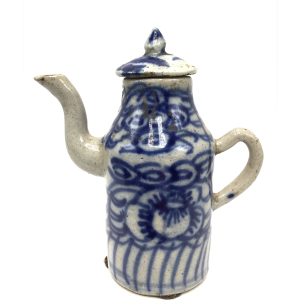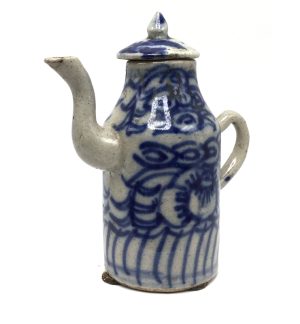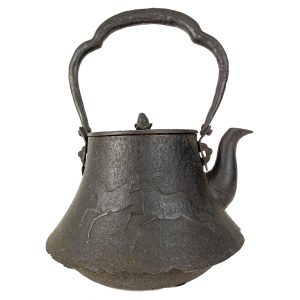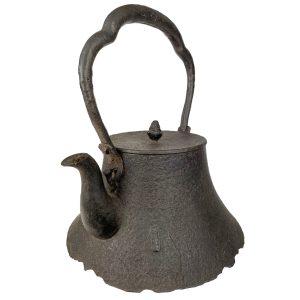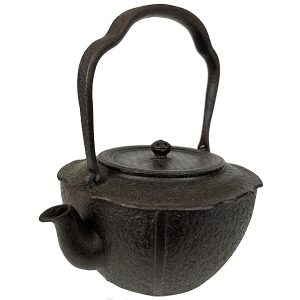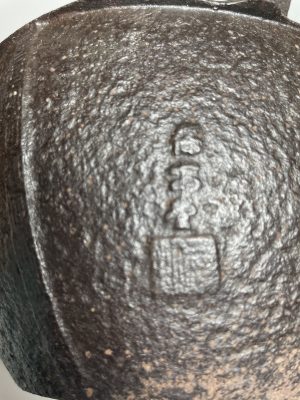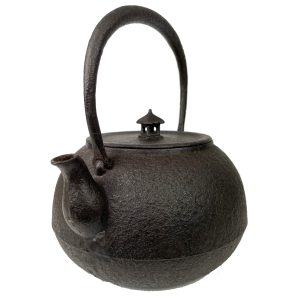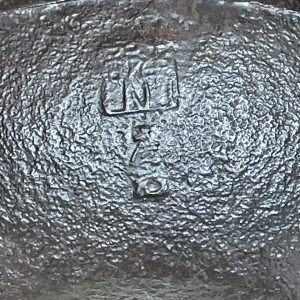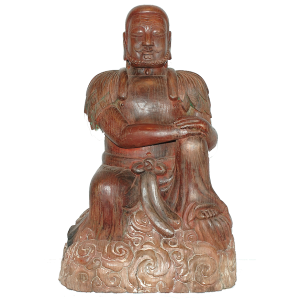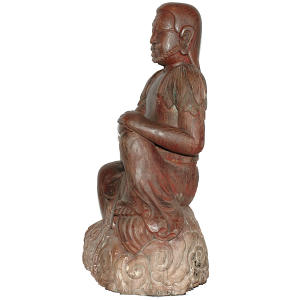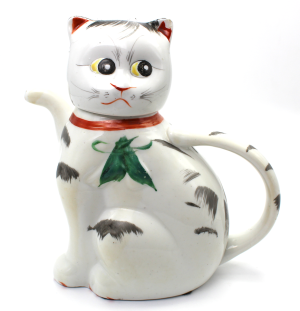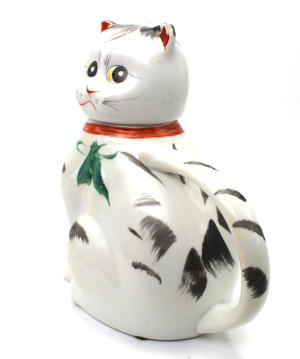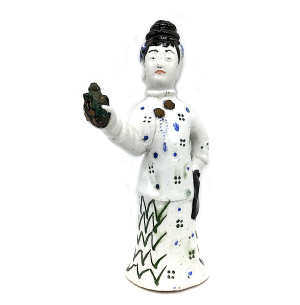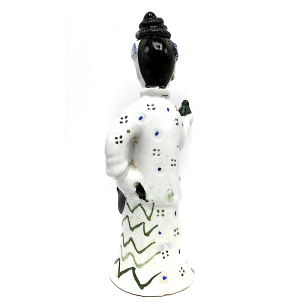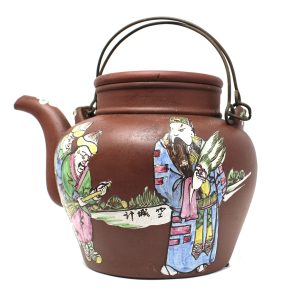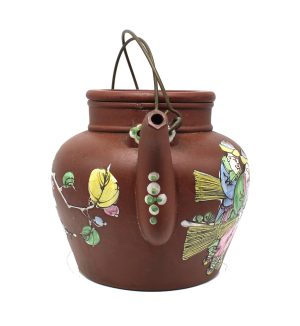-
Sale!


$135.00 Original price was: $135.00.$95.00Current price is: $95.00.
H: 5.25″ W: 4.625″ D: 2.375″ | FREE SHIPPING WITHIN CONTINENTAL U.S.
Charming miniature pitcher probably used in a restaurant or home kitchen as a dispenser for soy sauce, oils or other liquids. Elegant shape, covered with chrysanthemums, plantain leaves and bindweed vines with lotus bud on top.
-
Sale!


$695.00 Original price was: $695.00.$550.00Current price is: $550.00.
Ht: 12.5″ W: 10″ D: 9.5″ | CALL 213-568-3030 OR EMAIL [email protected] FOR SHIPPING COST
Made in the Meiji era (1868-1912),this hand crafted antique Japanese cast iron tetsubin teapot has an unusual decorative handle and curved spout and has a beautiful relief design of galloping horses. Horses have been revered creatures in Japanese culture that embody grace, power and nobility. The knob on the lid probably represents a lotus, the Buddhist symbol of purity and enlightenment. As with all antiques, these pieces are purely decorative for display purposes only.
-
Sale!


$325.00 Original price was: $325.00.$275.00Current price is: $275.00.
Ht: 8.625” W: 7.5” D: 6.5” | CALL 213-568-3030 OR EMAIL [email protected] FOR SHIPPING COST
The hand crafted Tetsubin teapot displays simple yet elegant design: a scalloped top, gently curved handle, and short rounded spout, textured surface. The body is divided in 4 quadrants with meander border designs and the lid is has tiny diamond shaped indentations and is topped with a lotus shaped knob. A raised manufacturers seal on the back. Like all old Tetsubin cast iron kettles, it has rust on the bottom which can be removed by boiling green tea inside it, and is thus for display purposes only.
-
Sale!


$295.00 Original price was: $295.00.$245.00Current price is: $245.00.
Ht: 9.25″ W: 8″ D: 7.25″ | CALL 213-568-3030 OR EMAIL [email protected] FOR SHIPPING COST
Meiji hand crafted cast iron Tetsubin, simple yet elegant textured surface, unique shape top temple ornamental knob. Manufacturer’s seals on side. Perfect tea lovers gift, it is recommended for display only to enhance any kitchen.
-
Sale!


$4,600.00 Original price was: $4,600.00.$3,900.00Current price is: $3,900.00.
H: 30.5″ W: 19.25″ D: 11.75 | CALL 213-568-3030 OR EMAIL [email protected] FOR SHIPPING
Masterful carving of Shen Nong, revered hero and reputed father of both Natural Medicine and Agriculture. Benevolent, sitting on cloud, leaves on shoulders. One of 3 sovereigns who contributed to well-being of humanity. Especially fitting for health care, pharmaceutical or agricultural professional or associated with tea.
-
Sale!


$145.00 Original price was: $145.00.$125.00Current price is: $125.00.
H: 8” W: 8” D: 3.75” | FREE SHIPPING WITHIN CONTINENTAL U.S.!
This charming vintage porcelain cat teapot with raised paw for pouring tea, removable head and a sinuous tail handle is whimsical and colorful with a red ribbon collar, green bow and green, black and red accents defining the expressive face, ears, head and paws, all beautifully hand-painted.
-
Sale!


$265.00 Original price was: $265.00.$165.00Current price is: $165.00.
Ht: 8.5” W: 5” D: 3” | FREE SHIPPING WITHIN CONTINENTAL U.S.
This small charming Qing or early Chinese Republic teapot is an attendant, her right arm is the spout and the left is handle and her with flowers is a removable lid . She typical attendant clothing, a high mandarin collared jacket draped over a flaring skirt that is the piece’s base.
-
Sale!


$975.00 Original price was: $975.00.$695.00Current price is: $695.00.
H: 6” W: 8.5” D: 6.125” | FREE SHIPPING IN CONTINENTAL U.S.
Rare Yixing teapot with brown wash, bright painted enamel scene from Peking opera. Floral are wish for long and healthy life, perfect metaphor for sharing tea loved ones. Kiln seals in body, bottom, lid. For decoration only.
End of content
End of content

